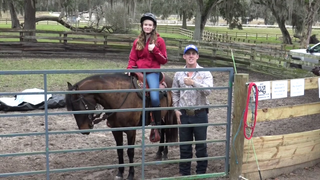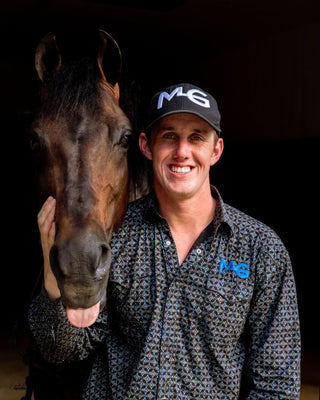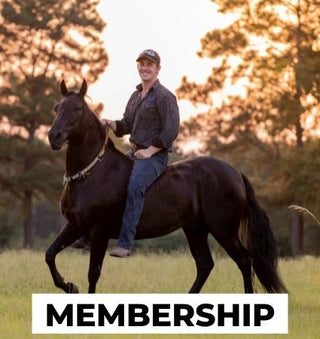Watch the Video Here or continue reading below!
Side passing is an essential skill for any horse and rider, helping with control, maneuverability, and overall training. Whether you're preparing for obstacles, improving communication, or refining your riding skills, learning how to side pass correctly is key. In this guide, we’ll walk you through the step-by-step process, common mistakes, and tips to perfect your horse’s side pass.
What is a Side Pass?
A side pass is when a horse moves laterally—stepping sideways while keeping its body straight. This movement is useful for opening gates, navigating trail obstacles, and improving overall responsiveness to rider cues.
Setting Up for Success
Before attempting the side pass, ensure your horse understands fundamental cues, such as yielding to pressure, giving to the bit, and moving its shoulders and hindquarters independently.
Step 1: Positioning Your Horse
To begin training, place your horse next to a fence or gate. This setup prevents forward movement and encourages lateral steps.
- Sit back and look up, maintaining a forward posture.
- Position your reins to guide your horse’s head slightly in the direction of movement.
- Keep one leg off the horse while using the other to apply gentle pressure to the ribs.
Step 2: Using Leg and Rein Cues
- Open your rein slightly to encourage movement.
- Apply rhythmic pressure with your leg to signal the side pass.
- If your horse moves forward instead of sideways, correct by adjusting the reins.
Step 3: Encouraging the First Steps
Your horse may take only one or two sideways steps at first, which is normal. The key is to reward even small successes and maintain consistent pressure until the desired movement is achieved.
- If the horse's head drifts too far in one direction, use the reins to straighten it.
- Keep your horse’s face towards the fence to prevent unnecessary forward motion.
Step 4: Refining the Side Pass
With repetition, your horse will recognize the cues and respond more fluidly. At this stage, focus on:
- Keeping the shoulders and hindquarters aligned.
- Ensuring consistent lateral movement without hesitation.
- Using verbal cues like clicking to reinforce correct behavior.
Common Mistakes and Fixes
Looking Down Instead of Forward
Many riders instinctively look down at their horse, which affects posture and balance. Always keep your eyes up and ahead.
Releasing Pressure Too Soon
If you release pressure before your horse fully understands the cue, it may become confused. Stay consistent until the movement is completed.
Holding Too Much Tension
Both horses and riders tend to tense up when learning something new. Keep your body relaxed, use steady cues, and avoid overcorrecting.
Practice Makes Perfect
With dedicated practice, your horse will begin to side pass smoothly with just a slight leg cue. Even if the movement is awkward at first, persistence and clarity in your cues will lead to success.
By following these steps and staying patient, you’ll soon have a responsive horse capable of performing a flawless side pass. Keep practicing, stay confident, and enjoy the process of improving your horsemanship!









